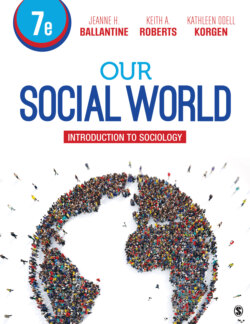Читать книгу Our Social World - Kathleen Odell Korgen - Страница 115
Agricultural Societies.
ОглавлениеPedro and Lydia Ramirez, their four young children, and Lydia’s parents live as an extended family in a small farming village in Nicaragua. The family plows the land with the help of strong animals such as horses and oxen, uses fertilizers, and waters the garden when needed. The Ramirezes’ way of life is typical in an agricultural society. Agricultural societies rely primarily on raising crops for food but make use of technological advances such as the plow, irrigation, animals, and fertilization to continuously cultivate the same land. The continuous cultivation of the same land results in permanent settlements and greater food surpluses. Agricultural societies use energy more efficiently than foraging societies. For example, the plow circulates nutrients better than a digging stick, and when an animal pulls the plow, the farmer uses strength beyond that of a person. As increasingly sophisticated agricultural technology resulted in surplus food, the size of population centers increased to as much as a million or more.
As surpluses accumulated, land in some societies became concentrated in the hands of a few individuals. Wealthy landowners built armies and expanded their empires. During these periods, fighting for land took precedence over technological advances. War was prevalent, and societies were divided increasingly into rich and poor classes. Those who held the land and wealth could control the labor sources and acquire serfs or slaves. Thus, the feudal system was born. Serfs (the peasant class) were forced to work the land for their survival. Food surpluses also allowed some individuals to leave the land and to trade goods or services in exchange for food. For the first time, social inequality became extensive enough to divide society into social classes. At this point, religion, political power, a standing army, and other meso-level institutions and organizations came to be independent of the family. The meso level became well established.
As technology advanced, goods were manufactured in cities. Peasants moved from farming communities, where the land could not support the large population, to rapidly growing urban areas, where the demand for labor was great. It was not until the mid-1700s in England that the next major transformation of society began to take place, resulting largely from technological advances and additional harnessing of energy. (See Figure 3.1 for a timeline of this transformation.)
▲ Plows, essential for agricultural societies to develop, were pushed by people and then pulled by animals and later machines. Harnessing energy ever more effectively is a prerequisite to a society becoming more complex.
© Getty/Bloomberg/Contributor
© Getty/Loop Images/Contributor
Description
▼ Figure 3.1 Timeline of the Industrial Revolution, 1712–1903
